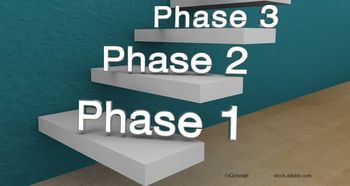
- Ophthalmology Times Europe November 2019
- Volume 15
- Issue 9
Light-adjustable IOL technology creates novel treatment window
The ability to fine-tune and customize patients' refractive outcome after cataract surgery could shift the need for physicians to do counseling and decision-making preoperatively more to postoperatively.
This article was reviewed by David Chang, MD
A light-adjustable
“It shifts the need to do all of our counseling and decision-making preoperatively more to postoperatively,” said Dr. Chang, clinical professor of ophthalmology at the University of California, San Francisco.“You can let the patient preview different refractive outcomes while they are pseudophakic.”
The LAL is a three-piece silicone lens with diffusible monomers in the optic. Following a standard phacoemulsification procedure, the ophthalmologist uses a slit lamp equipped with a near-UV light to alter the
Related:
As the light hits the lens, it initiates polymerization, causing micron-level changes in the structure of the lens. This allows the surgeon to adjust both the sphere and cylinder, Dr. Chang said.
An LAL precludes the need to perform intraoperative aberrometry or to mark the astigmatism axis prior to surgery, because the refraction will be adjusted to correct any astigmatism postoperatively, he said. Unlike with conventional toric
A surgeon can adjust up to 2 D of sphere in either direction using a single treatment, along with up to 3D of astigmatism, and up to 4.5D of astigmatism can be corrected with 2 treatments, he said. Light-adjustable
First, they eliminate a significant amount of guesswork on the part of the surgeon. Advances in biometry and
“We still have to estimate the effective lens position, posterior corneal astigmatism, or surgically induced astigmatism (SIA),” he said. “In addition, many eyes are at higher risk for
Related:
In a 2018 EUREQUO study of 280,000 patients cited by Dr. Chang, 27% of
Dr. Chang predicted, that for eyes with astigmatism, an ophthalmologist fresh out of residency should be able to achieve better results with the LAL than the most experienced surgeons now get with the most advanced pre- and intraoperative technologies.
While refractive outcomes can be changed or enhanced with LASIK, many ophthalmologists do not perform keratorefractive surgery, requiring a patient who needs an enhancement to see a second surgeon.
Even then, the patient must wait a few months until the refraction is stable before undergoing LASIK or PRK.
Related:
In addition to improving the refractive accuracy, Dr. Chang hopes that adjustability will improve the patient experience. Setting reasonable expectations and helping patients make decisions about their refractive goals during preoperative counseling can be difficult for both the patient and the surgeon.
Patients are sometimes overwhelmed by a bevy of unfamiliar terms and often intimidated by disclaimers that results of surgery may not meet their expectations. The ability to try different pseudophakic refractive states should reduce preoperative anxiety and confusion, and improve patient satisfaction.
“If you wanted natural distance vision,” Dr. Chang said, “how would you know what the difference would be between plano and (-) 0.75 with an
Light-adjustable
Related:
“In addition to achieving good distance vision in one eye, we can try out different amounts of myopia in the second eye,” he said. “We can let the patient decide postoperatively how much anisometropia is optimal for them, and how much they can comfortably tolerate. If they don’t like it, we can then reverse it.”
In theory, the ability to wait until after surgery to demonstrate different refractive options and targets should substantially reduce the amount of time that surgeons must spend preoperatively trying to describe these different options.
“The best thing is that patients will not have to understand concepts such as depth-of-focus, myopia, astigmatism, and anisometropia,” Dr. Chang concluded. “We can use trial lenses or even a soft contact lens trial to demonstrate postoperatively how increasing or decreasing myopia affects their uncorrected vision.”
The LAL is approved by the FDA and slated for commercial availability in the United States this month.
David Chang, MD
E: [email protected]
This article was adapted from Dr. Chang's presentation at the 2019 congress of the European Society of Cataract and Refractive Surgeons. Dr. Chang disclosed that he is a consultant at RxSight and Perfect Lens.
Articles in this issue
about 6 years ago
Quest for data increases debate for anti-VEGF therapy approachNewsletter
Get the essential updates shaping the future of pharma manufacturing and compliance—subscribe today to Pharmaceutical Technology and never miss a breakthrough.







































